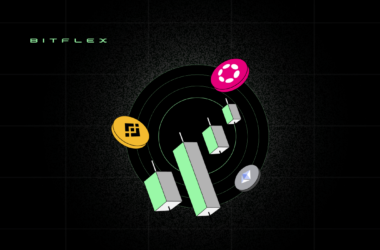Catalogue - Key Takeaways Show

Ethereum is the largest crypto by market capitalization and has been long regarded as the pioneer of smart contract platforms, and decentralized applications (DApps). However, the landscape of blockchain technology is ever-evolving, and Ethereum’s dominance is now challenged by a new class of assets known as liquid staking tokens. In this article, we will explore the emerging competition between Ethereum and liquid staking tokens, discussing reasons behind the shift and potential implications for the cryptocurrency ecosystem.
Rise of Liquid Staking Tokens
Liquid staking tokens represent a groundbreaking innovation in crypto world. They offer a unique blend of staking rewards and liquidity, addressing one of the primary challenges of traditional staking- its inability to use and trade assets until the staking period ends.
Liquid staking tokens are typically staked by collateralizing native assets within a proof-of-stake (PoS) network. Users receive these tokens in exchange for staking their assets, and these tokens can be freely traded and used in decentralized finance (DeFi) applications, or even transferred to others. The flexibility has caught the attention of investors and crypto enthusiasts alike, with several liquid staking tokens are making waves in the market.
Ethereum’s Vulnerability
Ethereum has been a go to platform for building decentralized applications, conducting initial coin offerings (ICOs), and launching innovative projects. However, the transition to Ethereum 2.0 which involves implementation of PoS consensus mechanism has been a lengthy and complex process. This transition has created an opportunity for liquid staking tokens to gain a foothold in the crypto market.
Here are some reasons why Ethereum faces growing competition from liquid staking tokens:
Liquidity Advantage
Liquid staking tokens provide users with the ability to stake their assets while maintaining liquidity. In contrast, the staked Ethereum on the Ethereum 2.0 network remains locked up until the network upgrades are complete. This liquidity advantage thus makes liquid staking tokens an attractive option for those who want to maximize the utility of their assets.
DeFi Integration
DeFi ecosystem has witnessed exponential growth and many liquid staking tokens seamlessly integrate into Defi platforms now. Such integration allows users to leverage their staked assets for various financial activities, including borrowing, lending, and yield farming.
Ethereum still plays a crucial role in DeFi, while facing neck-to-neck competition from liquid staking tokens in this regard.
Staking Rewards
Liquid staking tokens enable users to earn rewards by staking the assets with PoS networks. Such rewards can be substantial, and users can access them without any staking lock-up period. Ethereum 2.0 stakers on the other hand, must wait until the network upgrades are complete to access their rewards fully.
Competing Networks
Several PoS networks have emerged, each with their unique features and benefits. Projects like Polkadot, Solana and Cosmos have gained traction, offering users an alternative to Ethereum for staking and DeFi activities. Ethereum’s network congestion and high gas fees have also driven users to explore these alternatives.
Scalability and Innovation
Ethereum’s journey to Ethereum 2.0 reflects how its commitment for improvement towards scalability and energy efficiency works. However, the competition is not standing still as liquid staking tokens with other PoS networks are continuously innovating and addressing scalability challenges with enhanced network performance.
Implications for Ethereum
As liquid staking tokens gain popularity while establishing themselves as viable alternatives, Ethereum is facing a challenging environment. While Ethereum 2.0 promises significant improvements in terms of scalability and energy efficiency, its transition is a gradual process. In the meantime, other projects are actively capitalizing on Ethereum’s vulnerabilities.
This growing competition can lead to several outcomes for Ethereum:
Reduced Dominance
Ethereum may experience a reduction in dominance as more users and developers migrate to other networks and platforms that offer more immediate benefits, such as liquidity and DeFi integration.
Increased Innovation
Competition can be a catalyst for innovation. Ethereum can accelerate the development efforts to maintain its position in the market, resulting in faster progress toward Ethereum 2.0 and improved scalability.
Integration and Collaboration
Ethereum could choose to collaborate and integrate with emerging PoS networks for liquid staking tokens to offer users a broader range of options and benefits.
Market Fragmentation
The crypto market may become more fragmented as users and projects spread across various networks. This fragmentation could lead to a diversified ecosystem with multiple thriving platforms.
FAQS
What are Liquid Staking Tokens?
Liquid Staking tokens are assets that represent a tradable claim on staked assets within a proof of stake (PoS) network. They provide users with staking rewards while maintaining liquidity enabling trading and use in DeFi applications.
Can Ethereum 2.0 compete with Liquid Staking Tokens?
Ethereum 2.0 aims to address energy efficiency and scalability concerns. Thus, making it a strong contender in the long term. However, it faces immediate competition from liquid staking tokens, due to their liquidity advantages and DeFi integration.
Are Liquid Staking Tokens a Safe Investment?
As with other types of investments, there are some risks associated with liquid staking tokens, including smart contracts vulnerabilities and market volatility. Users should conduct research and exercise caution.
Conclusion
Ethereum’s position as the leading blockchain platform is facing a growing challenge from liquid staking tokens, which offer a unique advantage of liquidity. DeFi integration on the other hand requires immediate staking rewards. After Ethereum’s Shapella Upgrade, we can expect more innovative solutions going forward with tough competition to other staking platforms and their native tokens. As the crypto landscape evolves, it remains to be seen as the next competition. Ethereum’s journey in the face of liquid staking tokens without any doubt will shape the future of blockchain technology.
About Coinflare
Coinflare is a cryptocurrency exchange platform that offers traders a secure, easy-to-use, and convenient way to buy, sell and trade cryptocurrencies. Our platform has been designed with investors of all levels in mind, whether they are just starting out or experienced traders. We offer various features and tools to help users make the best trading decisions possible, including advanced charting and analytics, real-time market data, and various customisable trading interfaces. At Coinflare, we are dedicated to empowering our users and helping them reach their financial goals.
Stay in the loop about our launches, trading pair announcements, contests and more by following us on Discord, Telegram, and Twitter.








